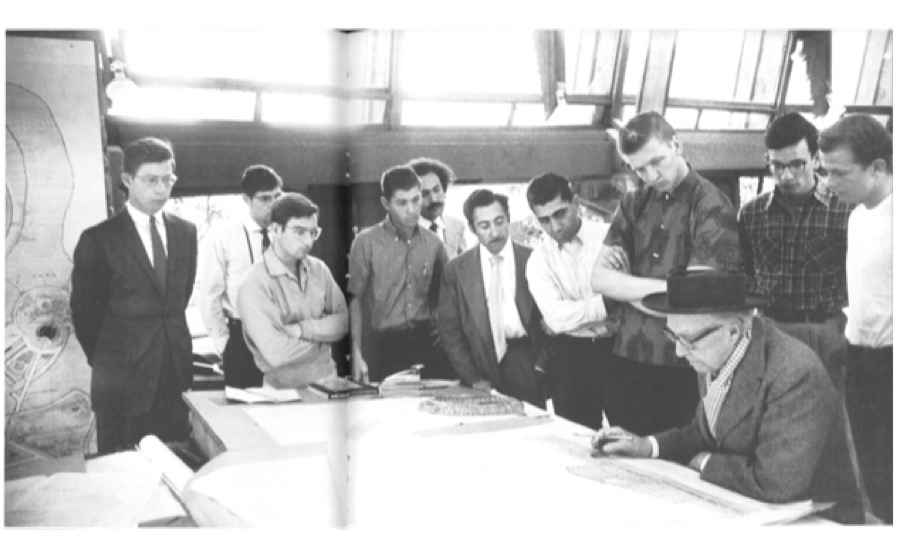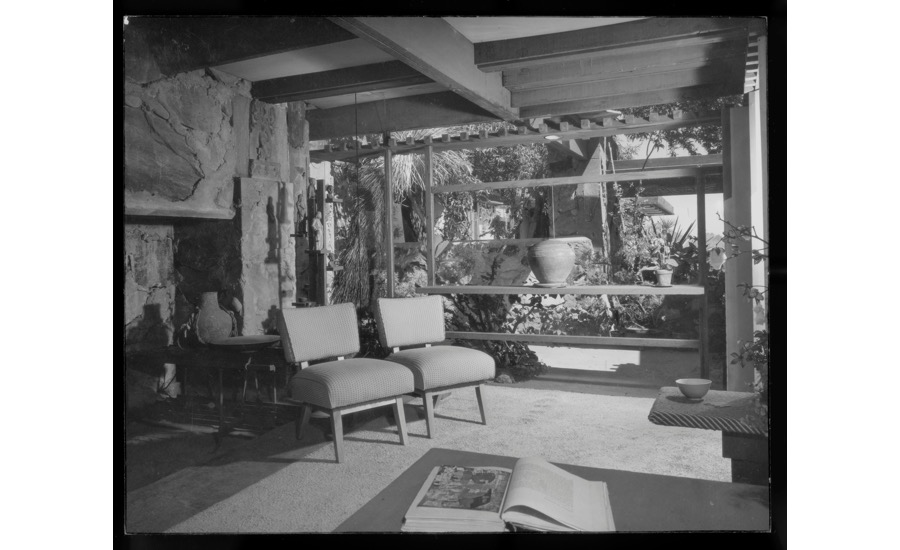Frank Lloyd Wright’s Taliesin School Will Close Its Doors This Spring

Frank Lloyd Wright and members of the Taliesin Fellowship in February 1958, as photographed by former RECORD editor in chief Mildred Schmertz.
Photo © Architectural Record

Taliesin West in Scottsdale, Arizona
Photo by Julius Shulman © J. Paul Getty Trust. Getty Research Institute, Los Angeles (2004.R.10)

Taliesin West in Scottsdale, Arizona
Photo by Julius Shulman © J. Paul Getty Trust. Getty Research Institute, Los Angeles (2004.R.10)

Taliesin West in Scottsdale, Arizona
Photo by Julius Shulman © J. Paul Getty Trust. Getty Research Institute, Los Angeles (2004.R.10)




It is the end of an era for the School of Architecture at Taliesin (SoAT)—the graduate institution established by Frank Lloyd Wright at his 800-acre family homestead near Spring Green, Wisconsin. The school announced today that it will officially close its doors this June.
The famed program built upon the legacy of the Taliesin Fellowship, which Wright formed in 1932 with his wife Olgivanna. The architect invited students, known as apprentices, to live and learn at his estate, where they would receive an immersive arts education focused around his philosophy of “organic architecture.” In 1937, with the foundation of the Taliesin West community in Scottsdale, Arizona, the school began to operate seasonally between the two locations. Both complexes were inscribed last year to the UNESCO World Heritage list, among other notable Wright buildings, including Fallingwater, the Solomon R. Guggenheim Museum, and the Hollyhock House.
In order to maintain accreditation as an academy of higher learning, the school—which was managed for decades by the Frank Lloyd Wright Foundation—became an independent entity in 2017. According to a statement put out by SoAT’s board, the school “was not able to reach an agreement with the Frank Lloyd Wright Foundation”—which stewards the Taliesin properties—to remain open.
“This is a sad and somber day for our school, our students and staff and the architecture community. We are saddened we could not reach an agreement with the Frank Lloyd Wright Foundation to continue operating the architecture school. Our innovative school and its mission were integral to Frank Lloyd Wright’s vision for connecting architecture to our natural world. Wright’s legacy was not just building. It was a school to promulgate the lessons for all future generations,” said Dan Schweiker, chairperson of the SoAT board.
In a subsequent statement released by the Foundation, the onus of the closure was put on the board: “In discussions between the organizations, SoAT Board leaders had communicated unequivocally to the Foundation that the School did not have a sustainable business model that would allow it to maintain its operation as an accredited program. As a result, leaders of the Boards of the two organizations had developed a proposal that would have allowed the school to continue operations on the Foundation’s two campuses—use of which was donated to SoAT by the Foundation since it became an independent organization—through the end of July, 2021.”
Stuart Graff, president and CEO of the Foundation stated: “The Foundation had reached an agreement with the leaders of the SoAT Board that would have allowed for second- and third-year students to complete their education at Taliesin and Taliesin West, and we are disappointed that it was not approved by the full SoAT Board.”
The school’s president, Aaron Betsky, declined to comment for this story.







